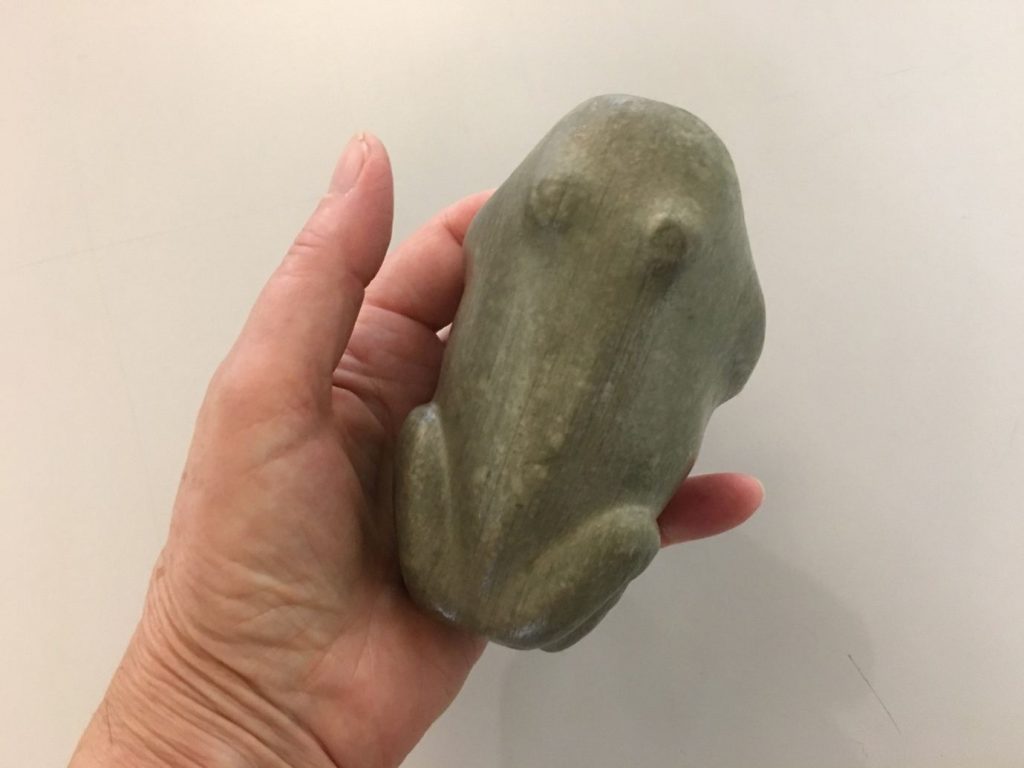Gorillas and Frogs: The use of 3D printed replica objects for handling in schools during the pandemic
By Jordan Abankwah, on 11 August 2021
This article has been written by Schools Engagement Manager, Emma Bryant, who is dedicated to working with schools in the vicinity of the Queen Elizabeth Olympic Park.
Because of the pandemic the School’s Engagement Programme for the UCL Museums had to be a radically adapted. The UCL museums closed and schools were having to embrace distance learning and it was impossible for trips to take place. Digital and online resources were made, booklets created and sent to schools and websites built to showcase projects and to give school students the opportunity to pick the brains of academics across UCL.
But what about the objects themselves? They could not be packed up and sent to schools and were inaccessible. As object-based learning is key to the programme this was problematic. The solution lay in 3D printing. These had already been successfully used in the Bio-Robotics and Animal Movement project; some 3D printed snake vertebrae are included in the kit sent to schools. Usually, school groups visit the Grant Museum of Zoology for an Animal Movement workshop where, amongst other things they study specimens to understand their specific adaptations for different types of movement. This workshop was adapted to become a digital activity and support material created. The magnificent gorilla skeleton was chosen as the specimen to be copied because it is not articulated (put together for display) and demonstrates adaptations for a specific type of locomotion. The multi-disciplinary Bio-robotics team of students, academics and UCL Culture staff rose to the challenge of scanning the huge bones and creating a whole new set of resources about gorillas.
The gorilla bones were transported to the 3D printing workshop at Charles Bell House where they were scanned using a Computer Tomography (CT) scanner by Dr Daniil Nikitichev from the Department of Mechanical Engineering, a long-standing member of the Bio-Robotics Schools project team. This was a lengthy process because only one side of the larger bones could be scanned before the scanner needed to cool off after a couple of hours. The images were then segmented, which is when the specific 3D volume is extracted from the series of 2D images. This is done slice by slice corresponding to the structure of the actual bone thus building a highly accurate model of it. The segmented 3D models of each bone were further smoothed and refined to create the finished printable model. The 3D bones are made with a thremo-plastic polymer deposited layer by layer by 3D printer. As nozzle moves horizontally the material is deposited onto a print bed which moves vertically.
Once the replica gorilla skeletons arrived at the East London secondary schools the students studied the forty-three bones and recreated the skeleton. This is like doing a very large complicated 3d jigsaw puzzle and this process enabled them to work out how the joints were articulated and what adaptations the gorilla has for its environment with a focus on locomotion. With this knowledge and using other resources provided by the project team they went onto design their own bio inspired robot.
The Creating Aspirations was another project that benefitted from the use of 3D printed objects. Since 2018, teams of students on the Museums and Galleries in Education MA at UCL have worked with a year 5 class throughout the academic year, in collaboration with George Mitchell Primary School in the London borough of Waltham Forest.
This year the focus was on Ancient Sudan and the Petrie Museum objects. Four 3D printed objects were used in virtual workshops during the spring and summer terms. They were two shabtis (a figurine put in tombs which became a servant for the deceased in the afterlife), an ankh (a symbol of life) and a limestone frog. Through looking, handling and discussing these objects the school students used object-based learning whilst being virtually guided by the UCL students in a similar way as they would do in a museum. Various other activities inspired by these objects took place including making a personal symbol of life from clay inspired by the Ankh, writing museum labels for each of the objects and learning about the Egyptian pantheon of gods using the frog, which is associated with fertility.
By using these 3D printed replicas in schools during the pandemic students were able to learn from objects and have a richer and more in-depth experience than by simply looking at an image. After months of online learning this opportunity to look at and handle objects was a welcome relief for students and teachers alike.
4 Responses to “Gorillas and Frogs: The use of 3D printed replica objects for handling in schools during the pandemic”
- 1
-
2
Sue Dale Tunnicliffe wrote on 1 October 2021:
Delighted to see what our research showed – learning about the skeleton from the individual bones and their connectsions, not by taking a comlplete skeleton to pieces
-
3
Daniil Nikitichev wrote on 5 October 2021:
What a privilege to be involved in this fantastic project. I am glad to see my work on Gorilla skeletons is useful for the students.
-
4
Daniil Nikitichev wrote on 5 October 2021:
What a privilege to be involved in this fantastic project. I am glad to see my work on Gorilla skeletons is useful for the students. It is great to see how much joy they bring.
 Close
Close







Our students had a great time being able to actually touch the bones and see the shapes and sizes and how they compare. The favourite part was the skull and jaw, students had a great time investigating how they articulate and thinking about the power that can be produced by a gorilla in comparison to a human. They were inspired to build a robot based on a rabbit jumping, by simplifying the skeletal shape.